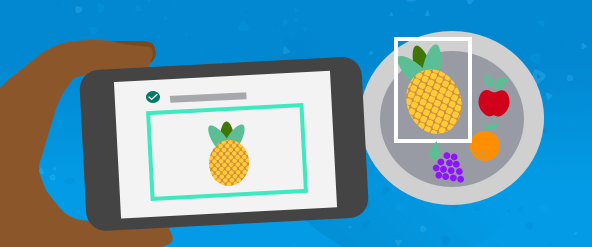AutoML Vision Edge
Crie modelos de classificação de imagem personalizados usando seus próprios dados de treinamento com o AutoML Vision Edge.

Se você quiser reconhecer o conteúdo de uma imagem, uma opção é usar a API de rotulagem de imagens no dispositivo ou de detecção de objetos no dispositivo do Kit de ML. Os modelos usados por essas APIs foram criados para uso geral e são treinados para reconhecer os conceitos mais encontrados em fotos.
Se for necessário um modelo de rotulagem de imagens ou detecção de objetos mais especializado, que cubra um domínio de conceitos mais específico (por exemplo, um modelo para distinguir entre espécies de flores ou tipos de alimentos), é possível usar o Firebase ML e o AutoML Vision Edge para treinar um modelo com suas próprias imagens e categorias. O modelo personalizado é treinado no Google Cloud e, assim que estiver pronto, será usado totalmente no dispositivo.
Introdução à rotulagem de imagens Introdução à detecção de objetos
Principais recursos
| Treinamento de modelos com base nos dados |
Treine automaticamente modelos de rotulagem de imagens e de objetos personalizados para reconhecer os rótulos importantes para você usando seus dados de treinamento. |
| Hospedagem de modelo embutida |
Hospede seus modelos com o Firebase e carregue-os no ambiente de execução. Ao hospedar o modelo no Firebase, é possível garantir que os usuários tenham o modelo mais recente sem lançar uma nova versão do app. Também é possível agrupar o modelo com o aplicativo, para que ele esteja imediatamente disponível na instalação. |
Caminho de implementação
| Montar dados de treinamento | Reúna um conjunto de dados de exemplos de cada rótulo que você quer que o modelo reconheça. | |
| Treinar um novo modelo | No Console do Google Cloud, importe os dados de treinamento e use-os para treinar um novo modelo. | |
| Uso do modelo no app | Agrupe o modelo com o app ou faça o download dele quando for necessário. Em seguida, use o modelo para rotular imagens no dispositivo. |
Preços e limites
Para treinar modelos personalizados com o AutoML Vision Edge, é preciso estar no plano de pagamento por utilização (Blaze).
| Conjuntos de dados | Faturado de acordo com as taxas do Cloud Storage |
|---|---|
| Imagens por conjunto de dados | 1.000.000 |
| Horas de treinamento | Nenhum limite por modelo |
Próximas etapas
- Saiba como treinar um modelo de rotulagem de imagens.
- Saiba como treinar um modelo de detecção de objetos.
